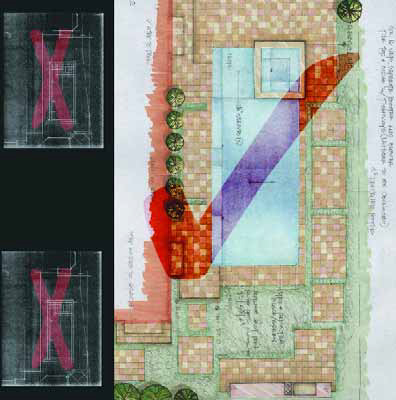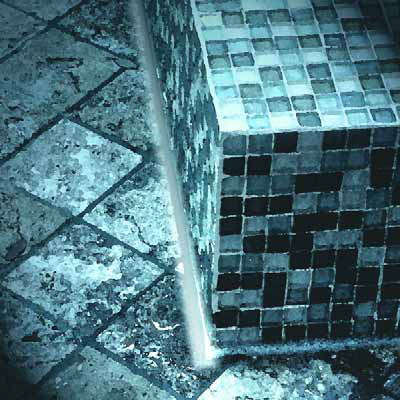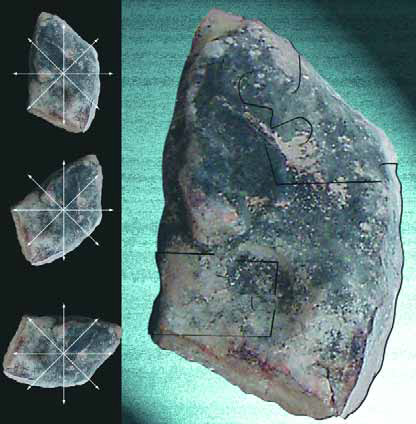engineering
It's often said nowadays that watershaping is the art of fitting our work into the surrounding environment. In many ways, what we do at Star Pools in Houston is a prime application of that powerful yet basic concept in the way we tackle both the opportunities and limitations of the residential settings we encounter. Houston is dotted by affluent neighborhoods teeming with homes in classic Mediterranean and Tuscan styles. Stately is a word often used to describe these homes, and because we've based our design philosophy firmly on the idea that the swimming pool and garden areas should look as though they were designed as part of the home itself, our work is largely a manifestation of
Even though many swimming pools look similar in lots of fundamental ways, every one of them is actually quite unique. From soil and groundwater conditions or the specifics of their structural designs to the ways in which they have been installed, water-containing vessels of all shapes, types and sizes are, in fact, subject to a wide array of site- and workmanship-specific variables that can influence the way their concrete shells will perform through the years. When a watershape cracks, any number of things might have gone wrong. To the owner of a watershape, of course, such cracking is obviously a source of concern. The fix is often expensive, and it's not at all unusual for contractors to defend their work as a means of avoiding the necessity of paying to remedy the situation. This can leave the owner in a very difficult position in which experts must be called in to determine the true cause of the problem - and then he or she might be left alone to pressure the contractor who installed the vessel to take responsibility and
Where you've come from often has everything to do with where you're going. As a case in point, let me describe a project that had its origins all the way back at the very start of my work as a watershaper. My pool industry career began soon after I graduated from college. At the time, I was living in a garage in a rough part of Los Angeles and really wasn't sure what I wanted to do. I had studied ancient history, three-dimensional design and industrial design and had been accepted as a PhD candidate in pharmacology at the University of the Pacific. I was convinced I wanted to be a designer, but I wasn't sure which field I should enter. Then one day, at a time when I was about as broke as an organ grinder without a monkey, I answered an ad in the newspaper looking for
The Crown Fountain in Chicago's Millennium Park is an ingenious fusion of artistic vision and high-tech water effects in which sculptor Juame Plensa' s creative concepts were brought to life by an interdisciplinary team that included the waterfeature designers at Crystal Fountains. Here, Larry O'Hearn describes how the firm met the challenge and helped give Chicago's residents a defining landmark in glass, light, water and bright faces. In July last year, the city of Chicago unveiled its newest civic landmark: Millennium Park, a world-class artistic and architectural extravaganza in the heart of downtown. At a cost of more than $475 million and in a process that took more than six years to complete, the park transformed a lakefront space once marked by unsightly railroad tracks and ugly parking
As a landscape designer and installer, I have an abiding fascination with stone. I love the feel of it and its myriad colors, veins, streaks, shapes and textures, and I particularly admire its strength and flexibility. We pave with it, sculpt it and run water over, under and through it. It doesn't need painting or much care, looks great with plant material and has, as those who work with stone will point out, a timeless quality that cannot be reproduced with artificial materials. The best thing about stone is that when you use even one piece in an aesthetically meaningful way, you've
Sometimes, it's the simple things that trip you up. As a case in point, I was recently called by a homeowner who was wondering why the tile was falling off the outside wall of a raised pool that had just been installed by another builder. Unfortunately, that builder apparently hadn't known how to pull off this standard detail. The pool had been raised eight inches out of the ground in keeping with the design intent. This is a detail I use frequently to create a seating area around pools, but I was a bit mystified by this particular choice of elevation: It was too high to be a step (most building codes call for maximum 7-1/2-inch outdoor risers) and too low to serve very well as a bench. (Actually, it was just about right for
Our projects generally take two forms. On the one hand, we're called upon to "heal" ailing bodies of water that have been set up with inadequate or improperly functioning circulation and filtration systems. Although other people's mistakes mean good business for us, I won't say that we ever look forward to seeing potentially beautiful ponds or lakes cursed by unappealing or even unhealthy water conditions. On the other hand, we often have the opportunity to join a project at the design phase and handle the installation as well, applying what we know about water quality from the first conceptualization of the watershape. That's always a welcome prospect: Not only is it exciting to
One of the great things about working with different architects and designers the way we do is that, as builders of pools, spas and other watershapes, we enjoy opportunities to work across a broad range of design styles and sensibilities. In this instance, we're focusing on one of our favorite Southern California architects, Mark Singer. He's known regionally for crisp, clean, minimalist designs and is well regarded for his work on breathtaking lots along the coast in Laguna Beach, Newport Beach and other well-heeled cities overlooking the Pacific Ocean. To our good fortune, most of his projects include pools, spas, courtyard waterfeatures, outdoor sculptures and other amenities that enhance and extend his contemporary designs. Our most recent project with Singer was completed in the summer of 2004 at an older home in the beautiful beach community of Corona del Mar. The house itself was not originally designed by Singer, but it had been remodeled by him several times in the years since. In fact, so much has been done at this point that it's practically impossible to distinguish this residence from projects he has pursued from the ground up. COMPLETING A SCENE The homeowner is a wealthy land developer, a self-made man and a major fan of
For many of us in the watershaping business, the design and creation of fountains and water displays follows a predictable set of functional patterns. Given the traditional tools of the trade and our repertoire of nozzles and spray apparatus, for example, we tend to fashion effects and shapes from the ground up, literally throwing water in the air in a more or less uncontrolled manner. From a design standpoint, the problem with this tradition is that it eats up space like nobody's business: The pools needed to catch free-falling flows of any noteworthy height need to be large enough to capture water subject to the effects of splash, wind drift and overspray. The higher the spray, the larger must be the footprint of the pool to contain it adequately. As a rule, these pools need to have diameters of twice the height of the spray - by any measure a significant contribution of expensive commercial real estate to the creative effort at a time when property owners are motivated to make every available square foot an income producer. As an alternative in this space race, watershapers have found dry-deck or curbless fountains to be a great way to
To me, setting natural stone has always seemed something like assembling a very large jigsaw puzzle: All the pieces have to fit together, and there's definitely a right way and a wrong way to make it happen. I start the process systematically by laying stones out in an adequately large area and then just looking at them. As I go, I visualize how each will work as part of the overall composition and identify stones with either convex or concave contours that might fit together in some visual way. I'm constantly asking myself, "If I put this stone here and this other one right next to it, how will it work? Should I pick another stone and use a different combination?" Nature helps me in coming up with the answers, because






















